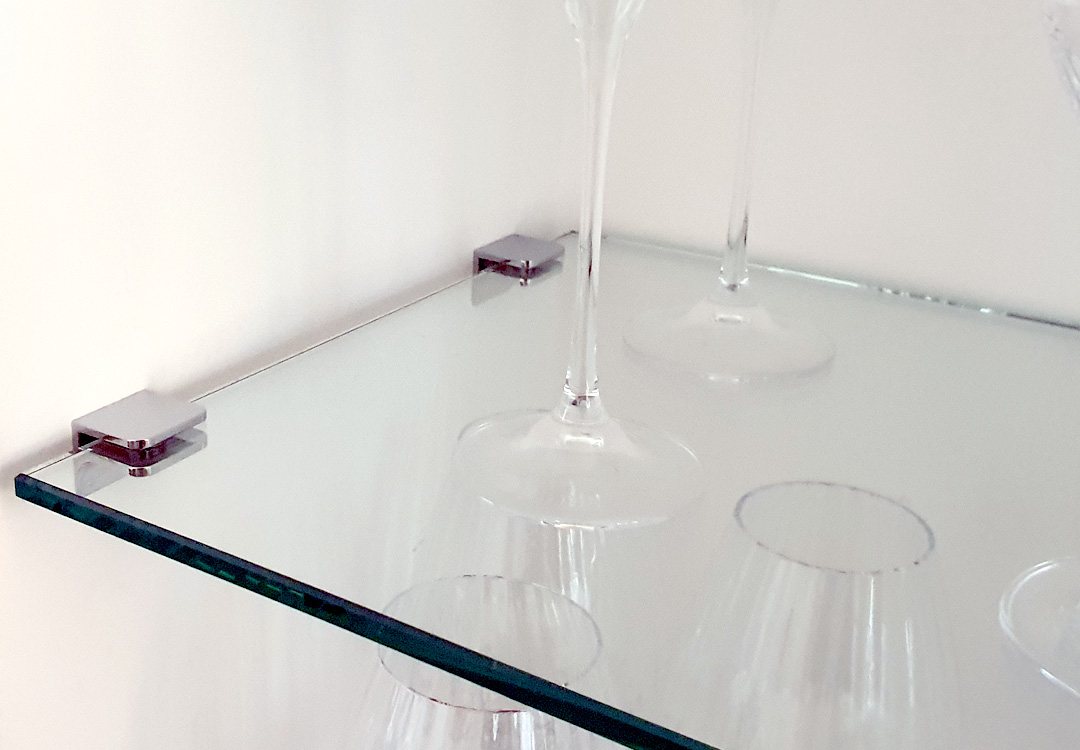Choosing the Right Thickness for Glass Shelves: A Comprehensive Guide
Introduction:
Glass shelves are a sleek and versatile option for both residential and commercial spaces. Not only do they offer a contemporary aesthetic, but they also provide functionality and durability. However, when it comes to selecting the appropriate thickness for glass shelves, many factors come into play. In this guide, we’ll delve into the considerations involved in choosing the right thickness for your glass shelves to ensure both safety and aesthetics.
1. Understanding Glass Shelf Thickness:
– Glass shelves come in various thicknesses, typically ranging from 6mm -10mm or more.
– The thickness of the glass directly impacts its load-bearing capacity, stability, and aesthetic appeal.
2. Load-Bearing Capacity:
– One of the primary considerations when selecting glass shelf thickness is the weight it will bear.
– Thicker glass shelves have a higher weight-bearing capacity compared to thinner ones.
– Consider the items you intend to place on the shelves and choose a thickness that can support their weight safely.
3. Safety Concerns:
– Thicker glass shelves offer increased resistance to breakage and are less prone to bending or sagging, enhancing safety.
– In areas with high traffic or where children or pets are present, opt for thicker glass to minimize the risk of accidents.
– Tempered glass, which undergoes a strengthening process, is often preferred for its increased safety features.
4. Aesthetic Considerations:
– The thickness of glass shelves can significantly impact the visual appeal of the space.
– Thicker glass shelves impart a more substantial and luxurious appearance, ideal for showcasing heavier or high-end items.
– Conversely, thinner glass shelves create a more delicate and minimalist look, suitable for modern or smaller spaces.
5. Design and Space Constraints:
– Consider the design aesthetic and overall theme of the space when selecting glass shelf thickness.
– In smaller rooms or areas with limited wall space, thinner glass shelves can create the illusion of more space and prevent overcrowding.
– For large or open areas, thicker glass shelves can make a bold statement and complement the scale of the room.
6. Environmental Factors:
– Environmental factors such as temperature variations and humidity levels can affect the durability of glass shelves.
– Thicker glass shelves are more resistant to thermal expansion and contraction, making them suitable for environments with fluctuating temperatures.
– In high-humidity environments such as bathrooms or kitchens, opt for tempered glass shelves with appropriate thickness to prevent moisture-related damage.
7. Cost Considerations:
– The cost of glass shelves typically increases with thickness, as thicker glass requires more materials and may involve additional manufacturing processes.
– Consider your budget constraints when selecting the appropriate thickness, balancing cost with functionality and aesthetics.
Conclusion:
Choosing the right thickness for glass shelves involves careful consideration of various factors, including load-bearing capacity, safety concerns, aesthetic preferences, design considerations, environmental factors, and budget constraints. By understanding these factors and weighing your options carefully, you can select glass shelves that not only enhance the visual appeal of your space but also provide durability and functionality for years to come. Whether you opt for thinner glass for a minimalist look or thicker glass for enhanced strength and luxury, make an informed decision to ensure the perfect balance of style and practicality.
